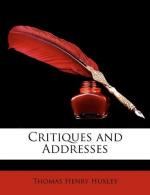The sides of the bags are sometimes closely approximated; but, when the bags are less flattened, their cavities are, usually, filled with numerous, irregularly rounded, hollow bodies, having the same kind of wall as the large ones, but not more than one seven-hundredth of an inch in diameter.
In favourable specimens, again, almost the whole ground substance appears to be made up of similar bodies—more or less carbonized or blackened—and, in these, there can be no doubt that, with the exception of patches of mineral charcoal, here and there, the whole mass of the coal is made up of an accumulation of the larger and of the smaller sacs.
But, in one and the same slice, every transition can be observed from this structure to that which has been described as characteristic of ordinary coal. The latter appears to rise out of the former, by the breaking-up and increasing carbonization of the larger and the smaller sacs. And, in the anthracitic coals, this process appears to have gone to such a length, as to destroy the original structure altogether, and to replace it by a completely carbonized substance.
Thus coal may be said, speaking broadly, to be composed of two constituents: firstly, mineral charcoal; and, secondly, coal proper. The nature of the mineral charcoal has long since been determined. Its structure shows it to consist of the remains of the stems and leaves of plants, reduced to little more than their carbon. Again, some of the coal is made up of the crushed and flattened bark, or outer coat, of the stems of plants, the inner wood of which has completely decayed away. But what I may term the “saccular matter” of the coal, which, either in its primary or in its degraded form, constitutes by far the greater part of all the bituminous coals I have examined, is certainly not mineral charcoal; nor is its structure that of any stem or leaf. Hence its real nature is, at first, by no means apparent, and has been the subject of much discussion.
The first person who threw any light upon the problem, as far as I have been able to discover, was the well-known geologist, Professor Morris. It is now thirty-four years since he carefully described and figured the coin-shaped bodies, or larger sacs, as I have called them, in a note appended to the famous paper “On the Coal-brookdale Coal-Field,” published at that time, by the present President of the Geological Society, Mr. Prestwich. With much sagacity, Professor Morris divined the real nature of these bodies, and boldly affirmed them to be the spore-cases of a plant allied to the living club-mosses.




